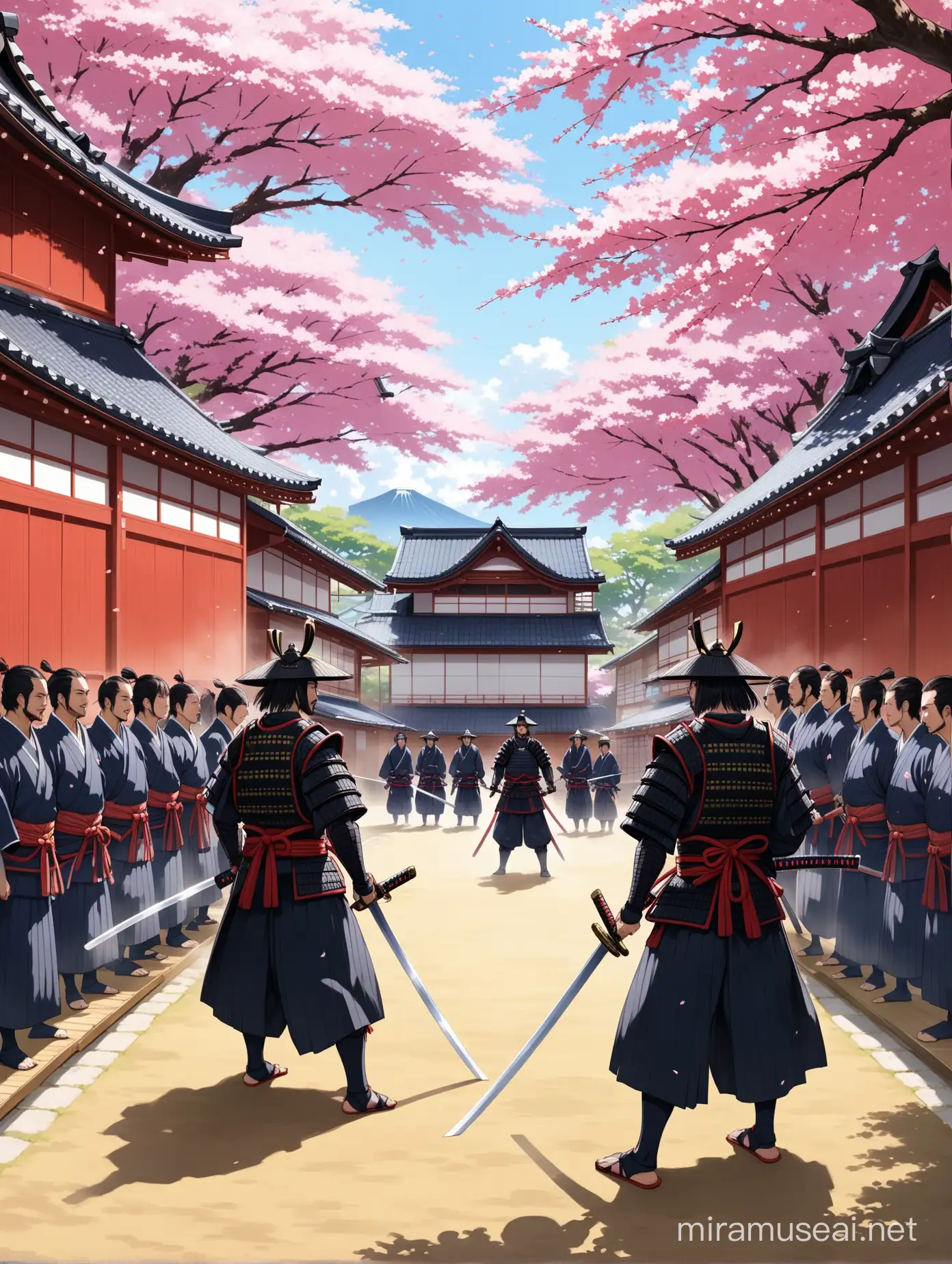Muromachi Period Samurai Duel with Spectators and Cherry Blossom Tree

AI Art Image Prompt
Prompt
Choose Model: superAnime
Aspect Ratio: 3:4
Related AI Images
Related Tags
AI Art Prompt Analyze
- Subject: The primary subjects of this image are two Japanese samurai engaged in a duel. Dressed in traditional samurai clothing, they confront each other with swords, indicating a tense and dramatic moment. The focus is on their poised stances and intense expressions, highlighting the skill and discipline of the samurai. Setting: The setting is in Japan during the Muromachi period, characterized by the presence of a traditional Japanese house and a sakura (cherry blossom) tree in the background. This historical context adds depth and authenticity to the scene, providing viewers with a glimpse into Japanese culture and history. Background: The background features a traditional Japanese house, contributing to the authenticity of the setting. The presence of a sakura tree not only adds visual appeal but also symbolizes the transient nature of life, a common theme in Japanese art and philosophy. Style/Coloring: The style of the image reflects the artistic conventions of the Muromachi period, with attention to detail and precision in depicting the samurai attire and architecture. The coloring is likely subdued, with muted tones to evoke a sense of historical authenticity and mood. Action: The action depicted is the samurai duel, capturing a moment of intense conflict and skillful combat. The spectators forming a ring around the duel add to the tension and drama, creating a sense of anticipation and excitement. Items/Costume: The samurai are dressed in traditional samurai attire, including kimono, hakama, and armor, reflecting the fashion of the Muromachi period. Their swords are prominently featured, symbolizing their status as warriors and the focus of the duel. Accessories: The only notable accessory mentioned is the sakura tree in the background, which serves both as a decorative element and a symbol of Japanese culture and aesthetics.